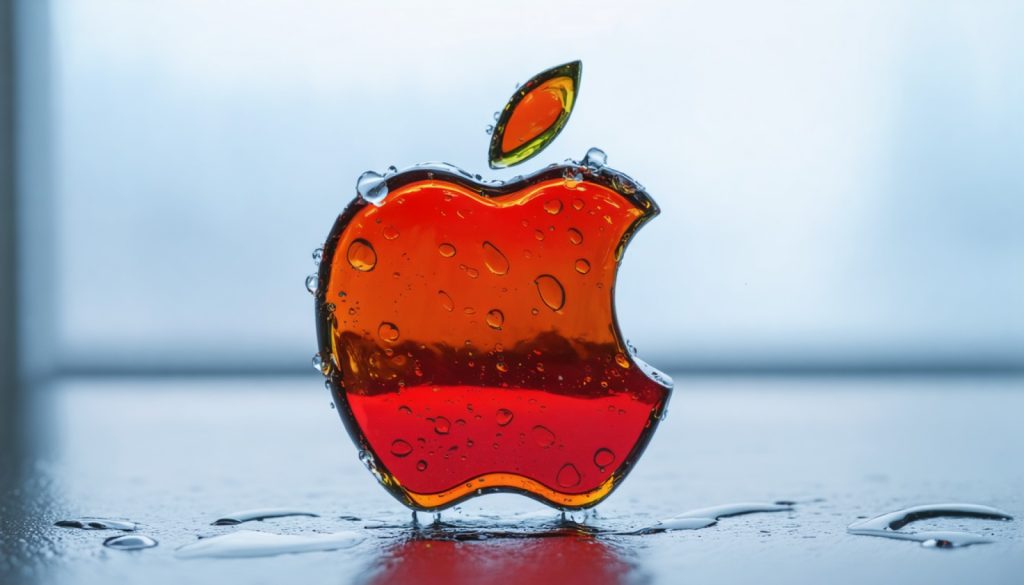
- Apple navigates complex international tensions as CEO Tim Cook responds to political scrutiny over U.S.-China negotiations during the Trump era.
- iPhone 17 series faces stock shortages due to limited supply of low CTE fiberglass cloth, pressuring Apple to stabilize its supply chain.
- U.S.-China trade tensions impact global markets, with analysts concerned about unresolved trade deals affecting economic stability.
- Tech earnings reveal mixed results: Alphabet Inc. shows strong revenue growth, while VinFast underperforms in the competitive automotive tech sector.
- Elon Musk’s Neuralink aims to give sight to the blind, while Tesla faces production challenges and China’s rare earth export constraints.
- The tech industry’s landscape emphasizes the balance between innovation, political dynamics, and economic pressures for continued success.
In the complex ballet of global technology and trade, Apple stands at the forefront—balancing on a wire sharpened by international tensions and domestic scrutiny. Recently, the tech giant’s CEO, Tim Cook, found himself under the microscopic gaze of Senator Elizabeth Warren, who questions Apple’s alleged influence during Trump-era negotiations with China. This scenario highlights broader concerns about corporate involvement in international policymaking—a narrative where economics and politics intertwine with far-reaching consequences.
As these political undercurrents swirl, Apple faces another tempest closer to home. The highly-anticipated iPhone 17 series is grappling with significant stock shortages, a result of scarce low CTE fiberglass cloth—a critical component in their production. Tim Cook, amid watching the company’s production lines stutter, must strategize swiftly to keep consumers and investors satisfied. These shortages underline a fragile supply chain still recovering from pandemic-induced disruptions, exacerbating pressures on Apple as it aims to sustain its flagship product’s legacy.
Meanwhile, Wall Street’s enthusiasm toward tech stocks is being tested. Analysts like Dan Ives point to the “ticking” clock on trade deals between the U.S. and China, which, if unresolved, threaten the delicate threads holding the global market tapestry together.
Amidst this backdrop, notable earnings reports reveal mixed fortunes in the tech sector. Alphabet Inc. flaunts a robust first-quarter revenue leap of 12% alongside exceeding EPS estimates. T-Mobile and Texas Instruments also report triumphant gains, showcasing resilience against market volatility. On the other end, Vietnamese automaker VinFast confronts the disappointment of missing both earnings per share and revenue estimates, highlighting the volatile nature of automotive tech investments.
Elon Musk’s Neuralink, striving for breakthroughs in biotech, raises the stakes with its goal to give sight to the blind—a bold claim met with equally bold funding pursuits. At the same time, Tesla grapples with production hurdles for its humanoid robot, Optimus, and faces China’s tightening grip on rare earth exports.
The lesson emerging from this narrative is the volatile symphony between technological innovation, political maneuvering, and economic principles. Companies navigating this landscape must harmonize these elements to maintain their footing. For Apple, prioritizing timely production solutions and addressing political scrutiny might not just secure the iPhone 17’s place in consumers’ hands but also reinforce its legacy as a stabilizing force amidst market flutter.
As the story unfolds, the rest of the tech world watches from the edge of their seats—reflective and hopeful—noting that even giants face storms but can emerge stronger with strategic foresight and adaptability.
The Hidden Turmoil Behind Apple’s Tech Dominance: What You Need to Know
Apple’s Strategic Maneuvers Amidst Global Tensions
Apple, a titan in the tech industry, often finds itself juggling both domestic and international challenges that affect its operations and reputation. Currently, the company is dealing with scrutiny over its role in past trade negotiations with China during the Trump administration. This controversy highlights a broader issue of how multinational corporations influence international policy, a domain often dominated by governmental entities rather than business leaders.
The Impact of Supply Chain Issues on Apple’s Flagship Product
A pressing problem confronting Apple is the shortage of low CTE fiberglass cloth, a crucial component used in the iPhone 17 series. This has led to significant stock shortages even before the official launch. Here’s how Apple might navigate this complex hurdle:
Strategies for Mitigation:
1. Diversifying Suppliers: Apple could establish partnerships with new suppliers to mitigate risks associated with dependency on a limited number of sources.
2. Increasing Inventory Resilience: By managing inventory more effectively, Apple can prepare for unexpected disruptions in supply chains.
3. R&D Investment: Investing in research and development for alternative materials may offer long-term solutions, reducing reliance on scarce components.
Global Trade and Tech Stocks: An Uncertain Balance
The trade relations between the U.S. and China remain precarious. Analysts like Dan Ives highlight how unresolved trade agreements could have profound impacts not only on Apple but also on the broader tech market. Ensuring that these relations stabilize is vital for companies that depend heavily on both markets for growth and manufacturing.
Insights from Recent Earnings Reports
While Apple faces challenges, other technology companies have shown resilience:
– Alphabet Inc. reported a 12% revenue increase, showcasing the bullish trend in digital advertising and cloud services.
– T-Mobile and Texas Instruments demonstrated robust financial health amidst global uncertainties.
Neuralink’s Ambitious Endeavors and Tech’s Volatile Landscape
Elon Musk’s Neuralink is ambitiously pushing boundaries in biotechnology with its mission to restore vision in the blind, although this claim invites skepticism without independent validation. Meanwhile, his other venture, Tesla, is facing challenges as China restricts exports of rare earth elements essential for technology advancements.
Actionable Recommendations for Navigating Tech Volatility
1. Stay Informed: Regularly monitor trade negotiations that influence market dynamics.
2. Diversify Investments: Reduce risk by spreading investments across various tech sectors.
3. Embrace Innovation: Support companies that are investing in sustainable and alternative technologies.
Conclusion: Agile Adaptation is Key
In summary, the tech industry is not immune to geopolitical and economic shifts. Whether you’re an investor or a tech enthusiast, understanding these dynamic interactions helps navigate future uncertainties.
For further exploration of tech market trends and insights, you might want to check out TechCrunch or CNBC for comprehensive coverage on global tech developments.
Quick Tips for Staying Ahead
– Keep an Eye on Market Leaders: Track Apple’s strategies and market performance for cues on broader sector trends.
– Understand Geopolitical Impacts: Analyze how international regulations and restrictions can influence tech innovations.
– Leverage Industry Reports: Utilize resources like Gartner and Statista for the latest market forecasts and data-driven insights.



